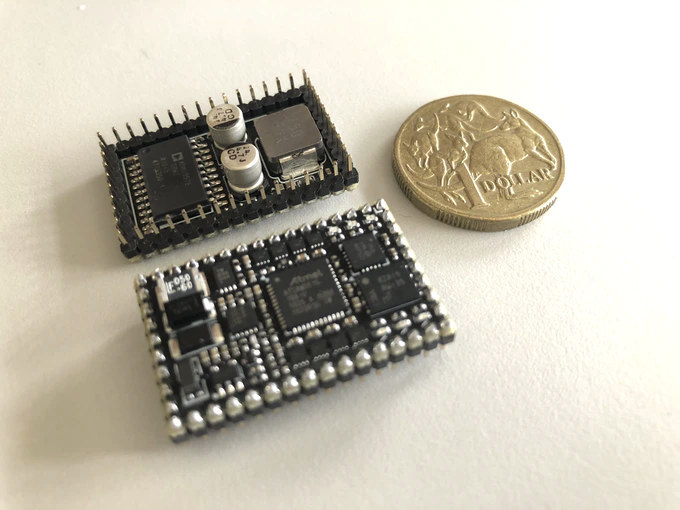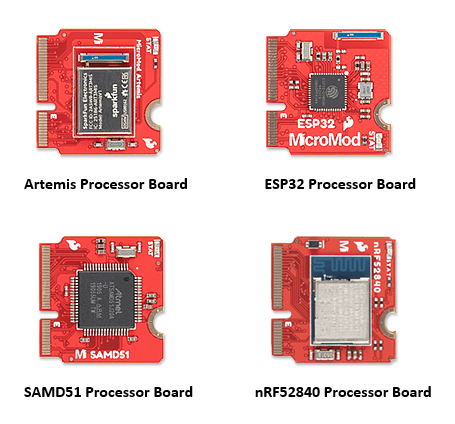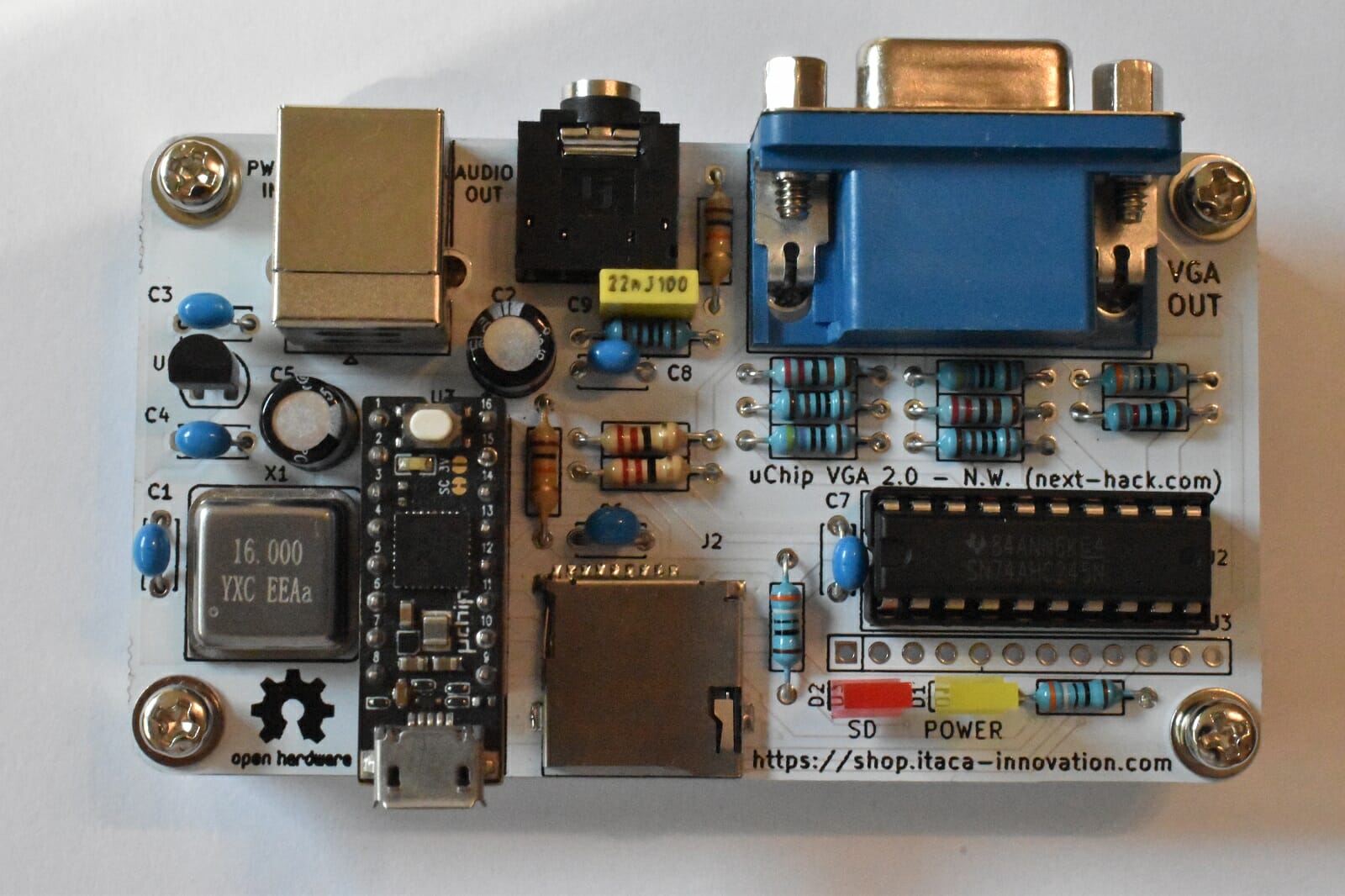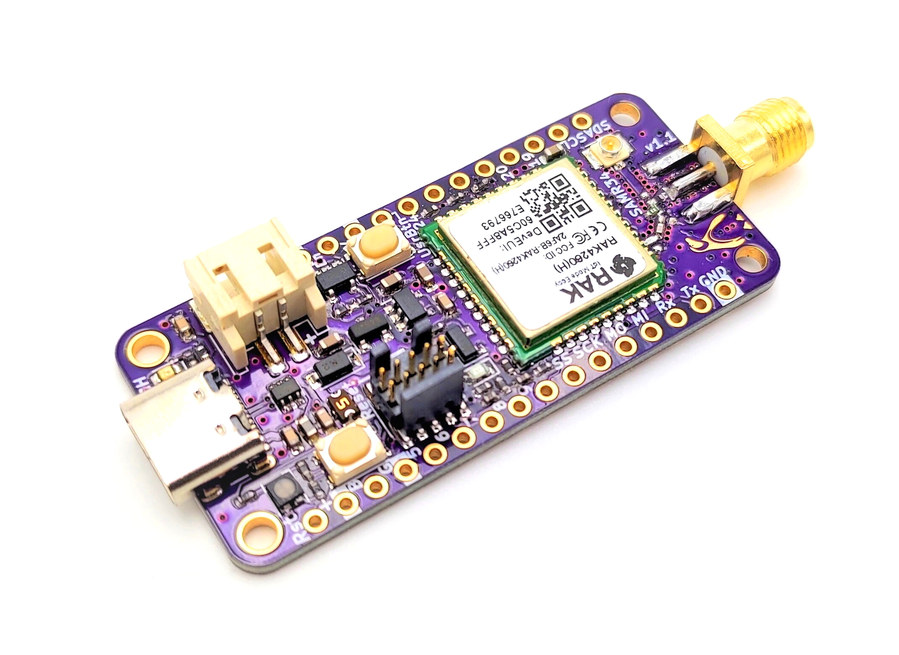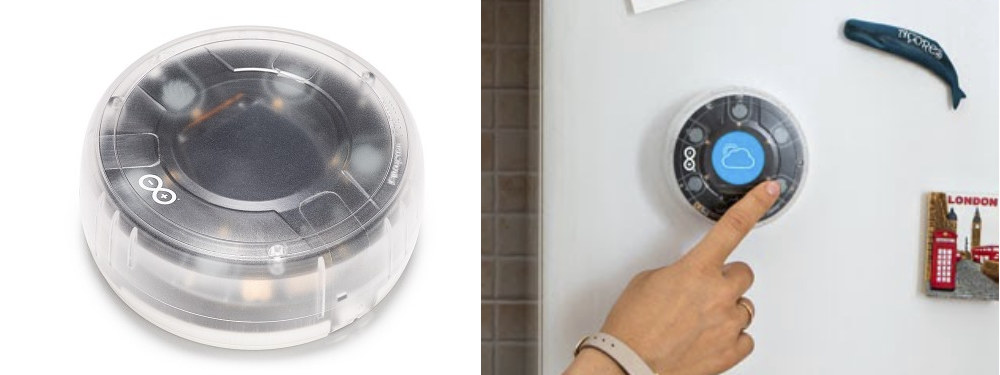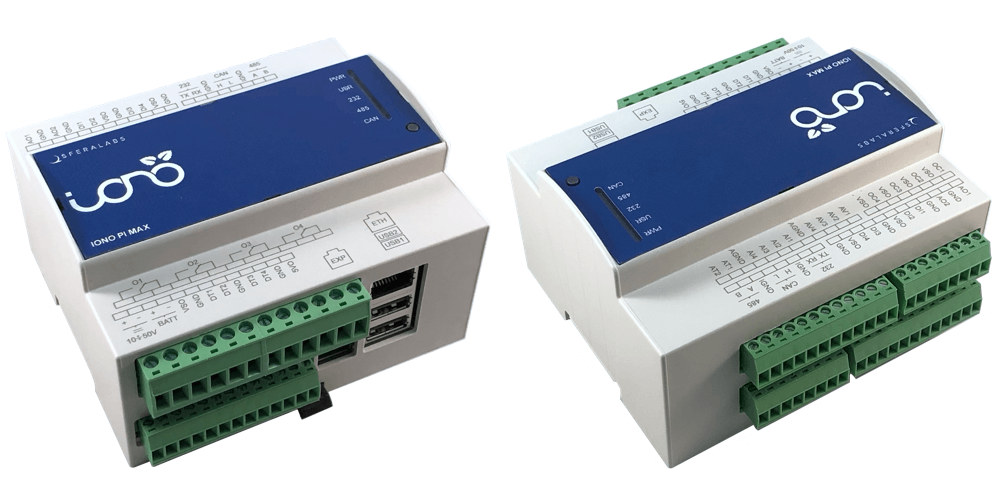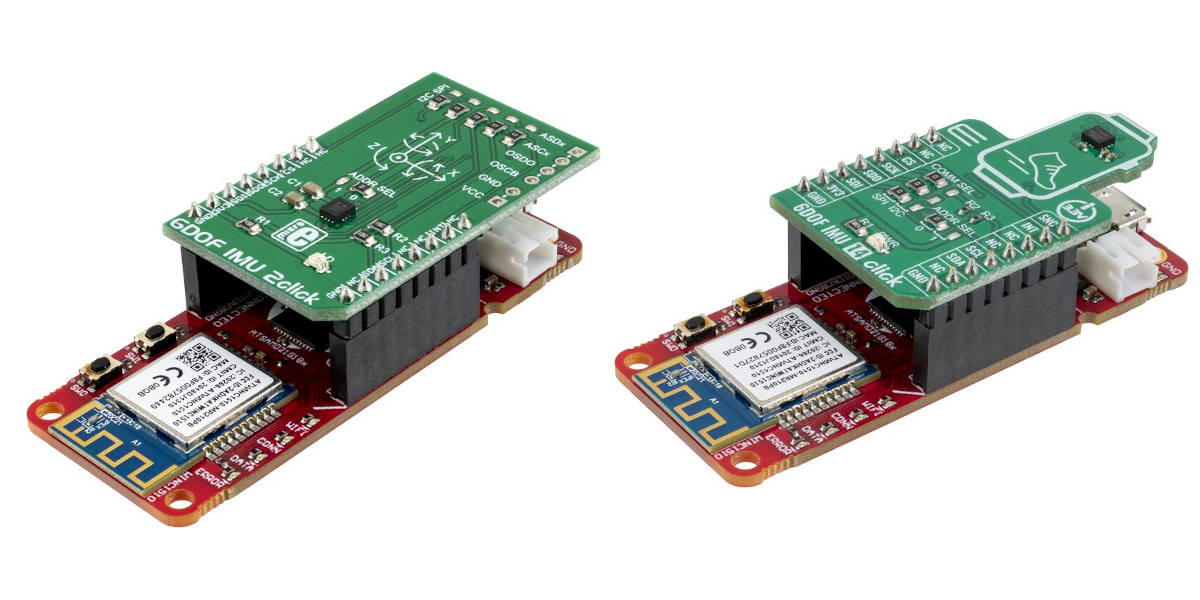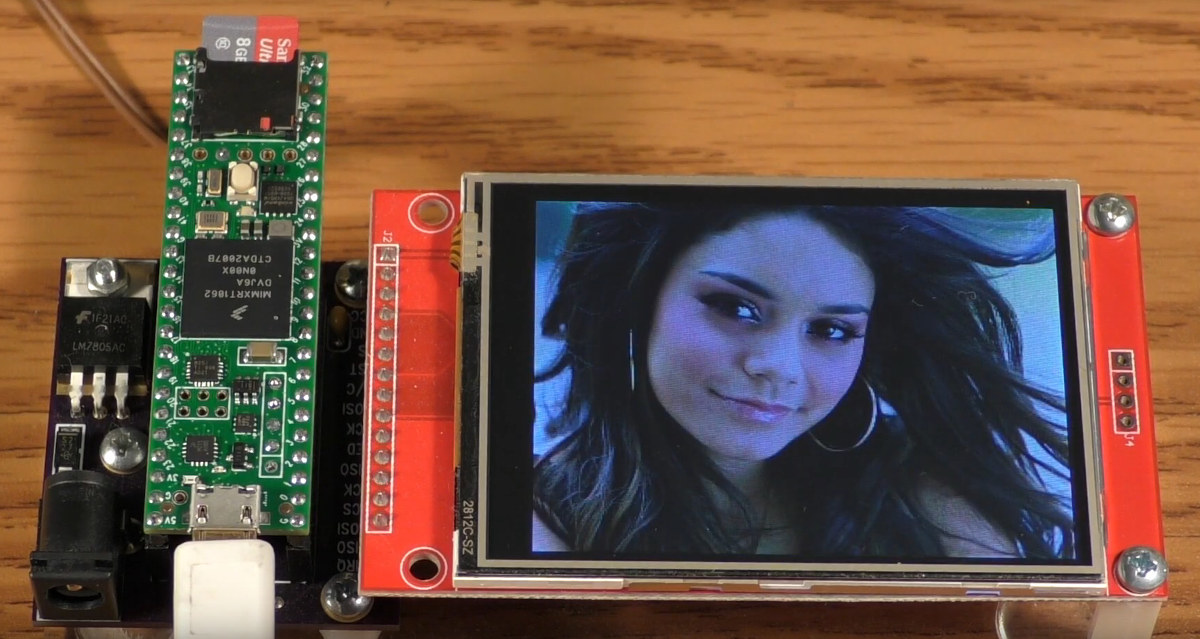SRKH Designs’ microZERO is a tiny, Arduino compatible module based on Microchip SAMD21 Arm Cortex-M0+ microcontroller for applications such as drone control, mobile platforms such as cars, trucks, boats and bikes, and other products working in demanding environments. The company has also designed two baseboards, namely Dev Board A with RGB color high resolution IPS display and the more classic Dev Board B, both mostly following Arduino UNO form factor to get started with development and/or evaluation. microZERO specifications MCU – Microchip SAMD21G18 Arm Cortex-M0+ @ 48 MHz with 256KB flash, 32KB SRAM Storage – 16MB SPI flash memory for additional storage and remote firmware upgrades I/Os 32x protected IO with 6x ADC, SPI, I2C, 6x PWM, TCC, USART, 1-WB, I2S, and USB 1 Mbps CAN controller with fully isolated and filtered CAN transceiver for maximum signal integrity 2mm pitch footprint Security – Microchip ATECCA508/608 software protection encryption IC Misc […]
MicroMod modular ecosystem offers M.2 microcontrollers cards and carrier boards
MicroMod is a modular interface ecosystem for quick embedded development and prototyping. MicroMod comes with two components, that is a microcontroller “processor board” and a carrier board. PC industry’s M.2 connector is the interface between these two components. The carrier boards are for the usage of various peripherals and the processor board act as the brain of the application system. MicroMod processor board has a dimension of 22×22 mm that can be easily fitted on the carrier boards. Although, the original M.2 standard was dedicated to swapping out peripherals where a user could swap one component with the other one. The MicroMod standard is for swapping out microcontrollers according to the functional and application requirements. MicroMod Processor Boards Artemis Processor Board comes with an Ambiq Apollo 3 Blue Arm Cortex-M4F with BLE 5.0 running up to 96MHz and a power rating of less than 5mW. It also supports the TensorFlow […]
uSVC Arduino VGA board – a portable and programmable retro-gaming console (crowdfunding)
Itaca Innovation previously launched uChip, an Arduino-compatible board that has a Cortex M0+ MCU that features 0.3” spacing between rows. Now, next-hack joined Itaca Innovation to come up with an expansion board for uChip. The uChip Simple VGA Console (uSVC) Arduino based retro-gaming console is open hardware and is a programmable console. It will allow creating and playing retro “9-bit” games with standard USB controllers and keyboards. You will get one uChip (pre-soldered) and the uSVC game loader pre-programmed, a PCB with a pre-soldered SMD MicroSD card reader. It also includes all of the components needed to build your uSVC, and Bill of Material (BOM) and assembly drawings will also be provided. uSVC Specifications uChip is the heart of uSVC (48 x 86 x 17 mm), with a Microchip SAMD21 Arm Cortex-M0+ MCU clocked @ 48 MHz (Arduino Zero compatible). A VGA output of 57 Hz vertical frequency, 30 kHz […]
Penguino Feather 4260 LoRa development board features RAK4260 module
Adafruit Feather form factor has become more popular in recent years with third-parties introducing Feather compatible boards such as the Giant Board (Linux capable), OrangeCrab (FPGA), or FeatherS2 (ESP32 WiFi + Bluetooth), and as well as FeatherWing add-on boards. Azerbaijan based MakerTronika Labs has launched their own Feather compatible board with LoRa connectivity: Penguino Feather 4260. The development board is powered by a RAK4260 module based on SAMR34 LoRa SiP and supports both 868 and 915 MHz bands. Penguino Feather 4260 specifications: LoRa module – Rak wireless RAK4260 module with: SiP – Microchip ATSAMR34J18 SiP with SAML21 Arm Cortex M0+ MCU @ 48 MHz, 40 KB RAM, 256 KB Flash, Semtech SX1276 LoRa Connectivity Frequency Range – 862 to 1020 MHz High level of accuracy and stability (32MHz TXCO) Max Tx Power: 20dBm; Max Sensitivity: -148dBm; Rx Current: 17mA (typical) Compliant with LoRaWan 1.0.2 Power Consumption Low RX current of […]
Oplà IoT Kit is Arduino’s first open programmable IoT platform
Arduino is well-known for its maker boards and shields that are sometimes sold as part of kits to experiment with electronics. Arduino Oplà IoT kit is a little different as it looks more like an actual consumer product once assembled. Powered by an Arduino MKR WiFi 1010 board, it is designed to make getting started with IoT easy for beginners, while still allowing more advanced users to customize and hack their smart home applications. Arduino Oplà IoT Kit is comprised of several hardware components: MKR IoT carrier with a 1.2-inch OLED color display, onboard environmental sensors (temperature, humidity, pressure, light, and proximity), IMU sensor, Grove connectors, two 24V relays, and five capacitive touch buttons. Arduino MKR WiFi 1010 board powered by Microchip SAMD21 Cortex-M0+ MCU and equipped with a 2.4 GHz WiFi 4 and Bluetooth 4.2 module based on ESP32 chip. Sensors – PIR motion sensor and moisture sensor A […]
Raspberry Pi CM3+ based Iono Pi Max industrial controller comes with an impressive number of I/Os
As the Raspberry Pi Compute Module 4 is only expected for next year, companies are still launching products based on Raspberry Pi Compute Module 3+ (CM3+), and Sfera Labs has just introduced Iono Pi Max industrial computer powered by a Raspberry Pi CM3+ system-on-module. Housed in a DIN rail enclosure, the Linux controller offers Fast Ethernet, three USB ports, isolated CAN and serial boards, some analog I/Os, a relay, as well as a real-time clock (RTC), integrated UPS, and more. Iono Pi Max specifications: SoM compatibility Iono Pi Max 3+ – Already fitted with Raspberry Pi Compute Module 3+ (Lite, 8GB, 16GB, or 32GB eMMC version) Iono Pi Max Solo – Barebone model compatible with Raspberry Pi Compute Module 3, CM3 Lite, CM3+ 8GB/16GB32GB, and CM3+ Lite MCU – Microchip SAME54 Cortex-M4F microcontroller with 1 MB flash, 256 KB RAM connected to the Raspberry Pi module via I2C, USB and […]
Microchip SAMD21 Machine Learning Evaluation Kits Work with Cartesiam, Edge Impulse and Motion Gestures Solutions
While it all started in the cloud Artificial Intelligence is now moving at the very edge is ultra-low power nodes, and Microchip has launched two SAMD21 Arm Cortex-M0+ machine learning evaluation kits that now work with AI/ML solutions from Cartesiam, Edge Impulse, and Motion Gestures. Bot machine learning evaluation kits come with SAMD21G18 Arm Cortex-M0+ 32-bit MCU, an on-board debugger (nEDBG), an ATECC608A CryptoAuthentication secure element, ATWINC1510 Wi-Fi network controller, as well as Microchip MCP9808 high accuracy temperature sensor and a light sensor. But EV45Y33A development kit is equipped with an add-on board featuring Bosch’s BMI160 low-power Inertial Measurement Unit (IMU), while EV18H79A features an add-on board with TDK InvenSense ICM-42688-P 6-axis MEMS. The photo above makes it clear both SAMD21 machine learning evaluation kits rely on the same baseboard with a MikroBus socket connected to either 6DOF IMU 2click or 6DOF IMU 14 click add-on board from MikroElektronika. Both […]
JPEGDEC is a Faster JPEG Arduino Library Designed for 32-bit MCUs
In order to ensure software compatibility, Arduino libraries are supposed to work on various types of hardware from 8-bit microcontrollers with a limited amount of memory to more powerful 32-bit chips like STM32 Arm Cortex-M MCU or ESP32 dual-core Tensilica WiSoC that can access a larger amount of RAM. This is all good, but in some cases, this may affect performance. Larry Bank noticed this when looking for a JPEG viewers for Arduino and only found ones which sacrificed speed to work on MCUs with very little RAM. So he started to work on JPEDDEC JPEG Arduino library optimized for speed and compatible with any MCU with at least 20K of RAM. Optimizations go beyond just loading more data into memory, as Larry explains in a blog post, the library also performs the removal of stuffed bytes, optimize the Huffman decode and DCT parts, and more. Some of the key […]


